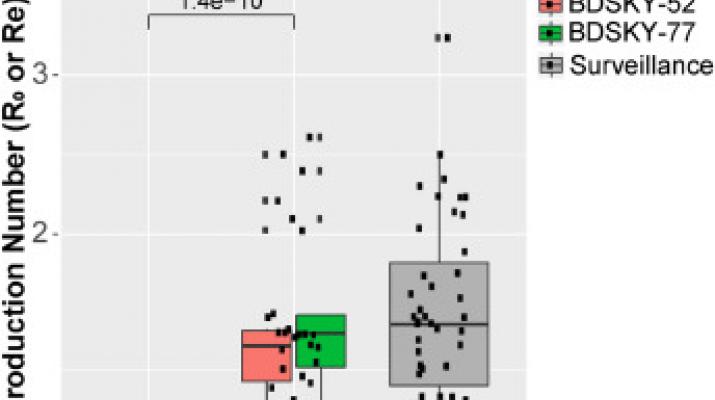
Abstract
Technological advancements in phylodynamic modeling coupled with the accessibility of real-time pathogen genetic data are increasingly important for understanding the infectious disease transmission dynamics. In this study, we compare the transmission potentials of North American influenza A(H1N1)pdm09 derived from sequence data to that derived from surveillance data. The impact of the choice of tree-priors, informative epidemiological priors, and evolutionary parameters on the transmission potential estimation is evaluated. North American Influenza A(H1N1)pdm09 hemagglutinin (HA) gene sequences are analyzed using the coalescent and birth-death tree prior models to estimate the basic reproduction number (R0). Epidemiological priors gathered from published literature are used to simulate the birth-death skyline models. Path-sampling marginal likelihood estimation is conducted to assess model fit. A bibliographic search to gather surveillance-based R0 values were consistently lower (mean ≤ 1.2) when estimated by coalescent models than by the birth-death models with informative priors on the duration of infectiousness (mean ≥ 1.3 to ≤2.88 days). The user-defined informative priors for use in the birth-death model shift the directionality of epidemiological and evolutionary parameters compared to non-informative estimates. While there was no certain impact of clock rate and tree height on the R0 estimation, an opposite relationship was observed between coalescent and birth-death tree priors. There was no significant difference (p = 0.46) between the birth-death model and surveillance R0 estimates. This study concludes that tree-prior methodological differences may have a substantial impact on the transmission potential estimation as well as the evolutionary parameters. The study also reports a consensus between the sequence-based R0 estimation and surveillance-based R0 estimates. Altogether, these outcomes shed light on the potential role of phylodynamic modeling to augment existing surveillance and epidemiological activities to better assess and respond to emerging infectious diseases.